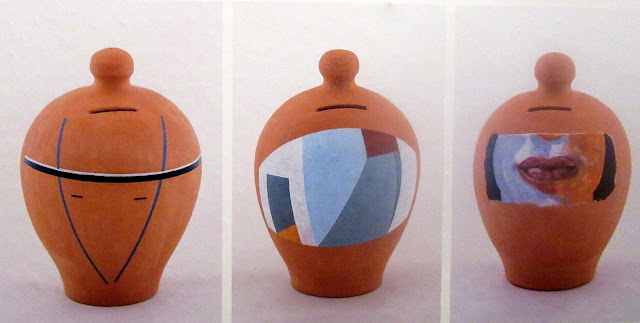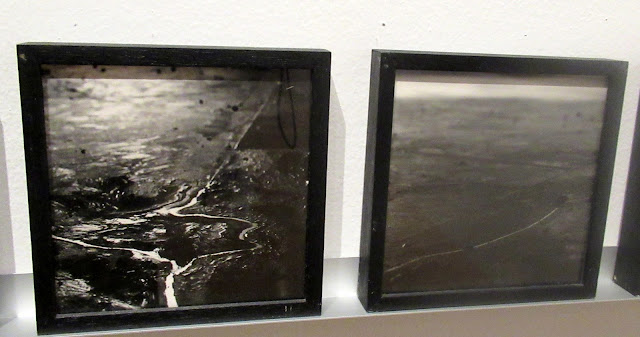George Hadjimichalis - a retrospective: works from 1966 60 2022 at the Benaki Museum, Pireos Annexe.
Hadjimichalis was born in Athens in 1954. In 1966 he took his first painting lessons. Since the summer of that year, painting became his main occupation. In 1971, without having finished school, he went to London, where he was accepted into the Department of Painting at the Hammersmith School of Art. In 1973 he was accepted by St. Martin's School of Art, on its advanced study programme from which he graduated in 1975. In 1978 he returned to Greece.
Hadjimichalis' art is multifaceted. His works comprise large units, whose construction often requires research into archives and all sort of texts - a kind of reperage. To create a work, he regularly uses a range of different mediums, such as painting, video, photography, text, printouts, etc. Several units were shown in this exhibition for the first time.
There are normally four temporary exhibitions on at the museum, but this time, only this exhibition, as it was taking up all four galleries. It was huge. I am going to cover some of the parts of the exhibition in three posts.
The main thing to say about this exhibition though, is that we had fun. We looked, we wondered, we laughed, we waited with anticipation for the next bit, marvelling at how the artist's mind worked and what he had in store for us next. It was a fantastic experience.
In 2013, Hadjimichalis and a group of friends founded the non-profit organisation 2020, whose aim was to raise cash to fund this exhibition. To this end, he asked his circle of friends, and friends of friends, to join 2020 as subscribers. The cost of the subscription came to 7 euro per month (the price of a glass of whiskey in a bar in Athens). As a gift for joining, members received a ceramic piggy bank painted by Hadjhimichalis and signed by him. In the past 10 years, 2020 has restored artworks, organised meetings and published the quarterly digital journal Tetradia, on topics related to the history of art, literature and more.
Gallery 1:
Unit1: The King and his Thoughts:
Unit 2: Communication/exchange of letters through images
Exchange of Images, 2010
The shift from an exchange of words to an exchange of images is not motivated by a mistrust of words but by a consciousness of their power to bring an issue to closure. The exchange of messages from which words are excluded (with the exception of the address 'Dear ...') confirms with each image sent and received the need for further extension of the exchange. The endlessness of the image exchange guaranteed the ongoing relation of two people who were far from each other - it was ended temporarily by both partners' decision to exhibit together all the exchanged images.
The exchange of letters/images was extensive: I have only reproduced a few so you can't see the whole sequence but only that of pairs.
An Exhibition of Portraits Dedicated to Antonello do Messina's painting 'Saint Jerome in his Study', 1475 (44 portraits, acrylic on wood, exhibited in their own space)
Their own space being this huge box where we had to look through the key holes to access the paintings. (Because nothing was straightforward in this exhibition, everything was quirky and different).
Numerous photographs of the work taken from a low angle were placed around the table and appeared to be of the countryside. A video of the table is virtually indistinguishable from the country. Finally, the artist braved the large and dangerous dogs which haunt the crossroad to paint a landscape of the scene. The subject matter may be seen as an essay on the rivalry and complicity between painting and photography, but the starkness of this spare realism takes its mood from the terrible tragedy - patricide, incest, blindness and death.
Along two walls, the numerous photographs of the countryside
the surface of the table - not easy to photograph as it was quite high
the video, 1997





















































No comments:
Post a Comment